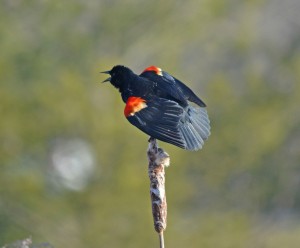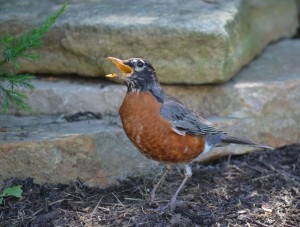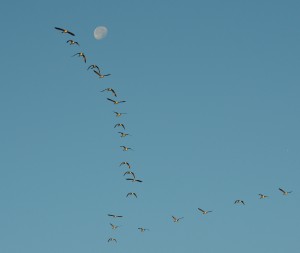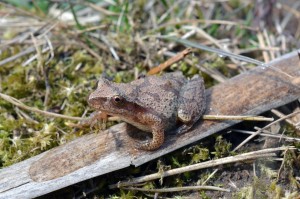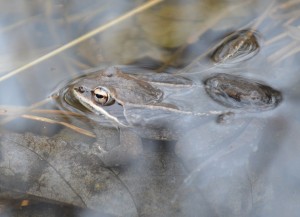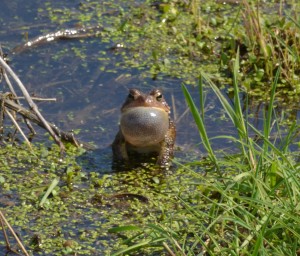Sounds of Spring
On our calendars here in Pennsylvania, spring arrives this Sunday, March 20th at 12:30 am. This is also known as the vernal equinox. However, I’ve been hearing spring for almost three weeks now. Nature is already in full swing with this changing season. With temperatures last week climbing to almost 80 degrees, I sometimes feel we move from winter directly into summer, with very little spring. By late February, I was already hearing the familiar call of the Red-winged blackbird coming from a small stand of cattails in the local wetlands. “Conk-a-deee, Conk-a-deee,” it seemed to say, over and over again, puffing out its bright, orange shoulder patches.
click here to hear the male Red-winged Blackbird calling from the cattails
Even before I flipped the calendar, I was excited to hear several bird species (usually the males) singing and calling-establishing territories and preparing “to attract girlfriends.” In addition to the Red-wings, our neighborhood becomes a morning chorus of coos, chirps, warbles and calls from Cardinals, Mourning Doves, Tufted Titmice, and Carolina Chickadees. As I sip my coffee, a Carolina Wren and a Red-bellied woodpecker exclaim their nearby presence, and a small flock of American Crows holler loudly as they fly by. They all know it’s time! But many of you may be asking, “What about Robins?” Yes, it’s true, Robins are also considered one of those first harbingers of spring, especially when several of them drop down in your grassy backyard looking for a few worms at this time of the year. The males are also up at dawn singing loudly, and chasing each other from yard to yard. But many Robins have been around all winter, feeding on berries until the ground thaws.
click here to hear the male American Robin singing
Look and listen overhead and you may also observe large flocks of Canada Geese or even Snow Geese, honking in their well-known V-formations, headed north to their Arctic breeding grounds. Nature begins to turn up the volume in March!
click here to hear the honks of migrating Canada Geese
As the birds continue to “sing their hymns” overhead, some of the amphibians have been busy down below. The Spring peeper, a frog that’s only the size of the end of your thumb, calls its raucous, peeping call from the grasses of wet meadows and marshes. In many places, hundreds will call together, like a blaring, rock band repeating the only chord they know, over and over again! As you approach them to try and see where the sounds are coming from, they go suddenly go silent, so as to not give away their hiding spot.
click here to listen to the peeps of the Spring Peeper
Wood frogs have also started their mating calls, and in fact, may have been calling while there was still leftover ice on many of the forested wetlands. These small, beautiful critters can be found in the forests of PA where vernal (seasonal) pools of water are formed each spring. But, different than the small peepers, their call may fool you if you’ve never heard it before, sounding much like quacking ducks. It tricked me the first time I wandered into their breeding area. This small, cool-looking frog with a black mask can be found throughout the U.S. They are the only frog that lives north of the Arctic Circle.
click here to listen enjoy the “quacking” of a chorus of Wood Frogs
As March fades into April, another amphibian will begin its vocalizations-many times from the same pools of water the peepers and Wood frogs called from the month before-the American toad. This brown, “warty-looking” animal will sit in the sunshine of small waterways, wetlands and even drainage ditches, bellowing out its long, monotone trills as its throat inflates to look like a kid blowing a bubble from a wad of gum. It reminds me of my childhood!
click here to listen to the “bubblicious” sounds of the American Toad
There are all kinds of animals that begin audible communications when spring arrives. From our feathered friends, to the smallest frogs, and even mammals and insects, wildlife lets us know a new season is coming-not by what we see, but what we hear! Enjoy!
